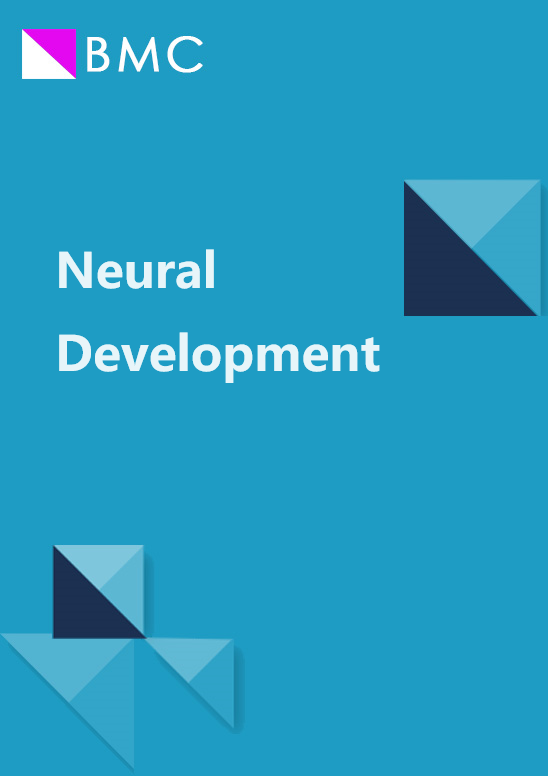Capitella teleta gets left out: possible evolutionary shift causes loss of left tissues rather than increased neural tissue from dominant-negative BMPR1
IF 2.5
3区 生物学
Q1 DEVELOPMENTAL BIOLOGY
引用次数: 0
Abstract
The evolution of central nervous systems (CNSs) is a fascinating and complex topic; further work is needed to understand the genetic and developmental homology between organisms with a CNS. Research into a limited number of species suggests that CNSs may be homologous across Bilateria. This hypothesis is based in part on similar functions of BMP signaling in establishing fates along the dorsal-ventral (D-V) axis, including limiting neural specification to one ectodermal region. From an evolutionary-developmental perspective, the best way to understand a system is to explore it in a wide range of organisms to create a full picture. Here, we expand our understanding of BMP signaling in Spiralia, the third major clade of bilaterians, by examining phenotypes after expression of a dominant-negative BMP Receptor 1 and after knock-down of the putative BMP antagonist Chordin-like using CRISPR/Cas9 gene editing in the annelid Capitella teleta (Pleistoannelida). Ectopic expression of the dominant-negative Ct-BMPR1 did not increase CNS tissue or alter overall D-V axis formation in the trunk. Instead, we observed a unique asymmetrical phenotype: a distinct loss of left tissues, including the left eye, brain, foregut, and trunk mesoderm. Adding ectopic BMP4 early during cleavage stages reversed the dominant-negative Ct-BMPR1 phenotype, leading to a similar loss or reduction of right tissues instead. Surprisingly, a similar asymmetrical loss of left tissues was evident from CRISPR knock-down of Ct-Chordin-like but concentrated in the trunk rather than the episphere. Our data highlight a novel asymmetrical phenotype, giving us further insight into the complicated story of BMP’s developmental role. We further solidify the hypothesis that the function of BMP signaling during the establishment of the D-V axis and CNS is fundamentally different in at least Pleistoannelida, possibly in Spiralia, and is not required for nervous system delimitation in this group.Capitella teleta被遗漏:可能的进化转变导致左侧组织缺失,而不是显性阴性BMPR1导致神经组织增加
中枢神经系统(CNS)的进化是一个引人入胜的复杂课题;要了解具有中枢神经系统的生物之间的遗传和发育同源性,还需要开展进一步的工作。对数量有限的物种进行的研究表明,中枢神经系统在双尾目动物中可能是同源的。这一假设的部分依据是 BMP 信号在沿背-腹(D-V)轴建立命运方面的相似功能,包括将神经规格限制在一个外胚层区域。从进化-发育的角度来看,了解一个系统的最佳途径是在多种生物体中进行探索,以形成完整的图景。在这里,我们通过研究在无脊椎动物Capitella teleta(Pleistoannelida)中表达显性阴性BMP受体1和使用CRISPR/Cas9基因编辑技术敲除假定的BMP拮抗剂Chordin-like后的表型,拓展了我们对双翅目第三大科BMP信号转导的理解。显性阴性 Ct-BMPR1 的异位表达并未增加中枢神经系统组织或改变躯干中 D-V 轴的整体形成。相反,我们观察到了一种独特的不对称表型:左侧组织明显缺失,包括左眼、大脑、前肠和躯干中胚层。在裂解阶段早期添加异位 BMP4 可逆转显性阴性的 Ct-BMPR1 表型,从而导致右侧组织的类似缺失或减少。令人惊讶的是,CRISPR敲除Ct-Chordin-like后,左侧组织也出现了类似的不对称缺失,但主要集中在躯干而非表皮。我们的数据突显了一种新的不对称表型,让我们进一步了解了 BMP 在发育过程中的复杂作用。我们进一步证实了一个假设,即在 D-V 轴和中枢神经系统的建立过程中,BMP 信号传导的功能至少在 Pleistoannelida(可能在 Spiralia)中是根本不同的,在该类群中神经系统的分界并不需要 BMP 信号传导。
本文章由计算机程序翻译,如有差异,请以英文原文为准。
求助全文
约1分钟内获得全文
求助全文
来源期刊

Neural Development
生物-发育生物学
CiteScore
6.60
自引率
0.00%
发文量
11
审稿时长
>12 weeks
期刊介绍:
Neural Development is a peer-reviewed open access, online journal, which features studies that use molecular, cellular, physiological or behavioral methods to provide novel insights into the mechanisms that underlie the formation of the nervous system.
Neural Development aims to discover how the nervous system arises and acquires the abilities to sense the world and control adaptive motor output. The field includes analysis of how progenitor cells form a nervous system during embryogenesis, and how the initially formed neural circuits are shaped by experience during early postnatal life. Some studies use well-established, genetically accessible model systems, but valuable insights are also obtained from less traditional models that provide behavioral or evolutionary insights.
 求助内容:
求助内容: 应助结果提醒方式:
应助结果提醒方式:


